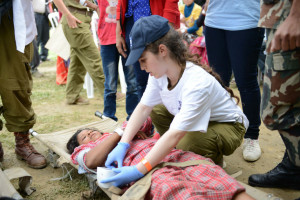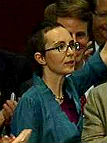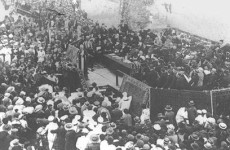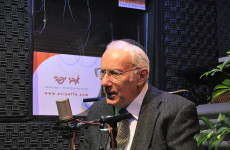Israeli medical devices and technology help teams locate and treat victims, says United Hatzalah paramedic in charge of a three-organization relief effort.

Israeli innovations like the Emergency Bandage and the Pocket BVM, a manual ventilator to assist people who are not breathing, are just two of the technologies that are being put to use in saving lives in earthquake-stricken Nepal. According to Israeli paramedic Dov Meisel, speaking to ISRAEL21c from Nepal’s badly-damaged capital, Kathmandu, a number of innovative Israeli technologies have been packed into 60 cases of medical and search-and-rescue equipment arriving at Kathmandu today for his 25-member Israeli disaster response team.
“A lot of our equipment is Israeli-made,” said Meisel, a volunteer with Israel’s United Hatzalah voluntary emergency response network and director of international operations for IsraeLife, an umbrella organization for which he is coordinating a joint disaster response team from United Hatzalah, ZAKA and FIRST rescue and recovery nonprofits.

The Emergency Bandage has a built-in pressure bar to stop bleeding and was invented by a former combat medic in the Israel Defense Force. It’s been credited for saving lives of US servicemen in Iraq, as well as Arizona Congresswoman Gabrielle Giffords.
Another cutting-edge technology from the Israeli battlefield is being used in the IDF’s field hospital in Kathmandu: freeze-dried blood powder that can be mixed with water to give transfusions. “If you are taking plasma of patients you have to keep it frozen and it won’t survive. With this, you just add water and it’s like fresh plasma. We’ve used it in other missions and it’s very helpful,” says Col. Dr. Ofer Merin, medical commander of the IDF field hospital.
Israeli aid workers are also using atmospheric water generation technology from Israel’s Water-Gen to pull drinking water right out of the air.
In addition to other blue-and-white supplies, the Israeli paramedic crew is mapping its activities using a satellite-based smartphone technology created for United Hatzalah, called the NowForce Life Compass.
“It works most of the time here,” said Meisel, explaining that reception is spotty and there is no electricity outside Kathmandu to charge mobile devices.
This article has been republished with permission by www.ISRAEL21c.org. Click here to continue reading.




